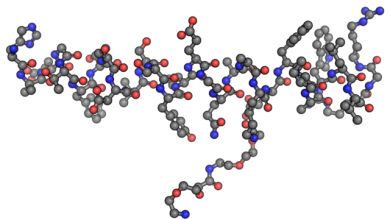A Complete Insight to Dupuytren Contracture Viking Hand

Dupuytren’s Contracture is a medical condition that affects hands and fingers. It is characterized by the thickening of tissues in the palm. Moreover, if Dupuytren Contracture Viking hand progresses, it affects one or more fingers in the palm and bends them towards the palm.
As a result, it becomes hard for you to straighten your fingers accurately. The condition mostly affects the ring finger and the little and middle finger. It progresses very slowly and takes months to years to develop a severe contracture.
Other names of Dupuytren’s Contracture
- Celtic hand.
- Contraction of the palmar fascia.
- Familial palmar fibromatosis.
- Morbus Dupuytren.
- Palmar fibromas.
- Palmar fascial fibromatosis.
- Viking disease.
History of Dupuytren’s Contracture
Dupuytren’s Contracture and Viking’s origin is linked to the Viking population and spread throughout Northern Europe as the Vikings conquered and acquired lands in the 13th century. Swiss doctor Felix Platter was the first to explain Dupuytren’s Contracture in the 1600s. After being present for hundreds of years, Dupuytren’s Disease was named in the 19th century.
Dupuytren’s disease is often considered a “disease of the north” into its northern European origins. Various studies into the prevalence of Dupuytren’s disease demonstrate its northern roots, showing Norway, Scotland, and Iceland with some of the highest prevalence compared to more southern nations.
However, nowadays, Dupuytren’s disease is seen in all types of patients.
Frequency of Dupuytren Contracture
Dupuytren’s Contracture occurs in about 5% of people in the United States. Moreover, the condition is 5 to 10 times more common in people of European descent than non-European descent.
Pathophysiology of Dupuytren’s Contracture
The pathophysiology of the Dupuytrens is similar to the normal connective tissue of the healing process. However, there are some aspects of Dupuytren’s disease procedure that differ and contribute to its pathogenesis.
For instance, in Dupuytren Contracture Viking hand, there is a greater amount of myofibroblasts producing type 3 collagen and a change in biochemical composition of the fascia. In addition, it also contains an abundance of cytokines and prostaglandins that contributes to the pathogenesis. An immune-mediated component of Dupuytren’s Contracture has also been proposed and researched.
Phases of Dupuytren disease
Luck Et Al. describe three distinct microscopic phases of Dupuytren’s disease. It includes:
- Proliferative phase: it is characterized by an increased fibroblast presence and proliferation in fascial bands. In this state, there will be as high as a fortyfold increase in the amount of proliferating fibroblasts.
- Active or involution phase: it is dominated by the myofibroblasts that contain myofibrillar bundles in the cytoplasm that allows them to contract and draw tissues together. These muscles, like fibers, align in the direction of the stress.
- Residual phase: it is characterized by the disappearance of the nodule and the appearance of the cords. The acellular cord causes shortening of the metacarpophalangeal and the proximal interphalangeal joint that produces the classic contracted appearance of the Dupuytren’s Contracture and Vikings.
Risk factors of Dupuytren Contracture
Dupuytren’s Contracture is usually passed down through generations in families and is the most common inherited disorder of connective tissue. Although the inheritance pattern is often unclear, some people who inherit gene changes linked with Dupuytren Contracture never develop the condition.
Nevertheless, while no specific causative factors for Dupuytren’s disease are known, there are various factors known to increase the risk for the disease. Some of them are as follows:
- Age: the condition is more common after 50 years of age.
- Alcohol abuse: It is believed that alcohol abuse affects the connective tissue similarly to tobacco. Therefore, if you are a chronic alcoholic, you are at a high risk of developing the disease.
- Diabetes: according to a recent survey, people suffering from moderate to poorly controlled diabetes are at a higher risk of developing the disease.
- Ethnicity: the Dupuytren’s Contracture and Vikingsare widely observed in residents of northern Europe.
- Family history: the presence of the disease in first-degree relatives, such as parents or siblings, increases the risk for Dupuytren’s Contracture.
- Gender: the condition is more common in men than in women. Furthermore, men have simple contracture of fingers than women.
- Smoking and tobacco use: according to various researches, the harmful chemicals in tobacco cause microscopic changes in the blood vessels of connective tissues leading to abnormal thickening that causes Dupuytren’s Contracture.
Non-surgical treatments for Dupuytren Contracture
Depending on the severity of the deformity, you can follow various non-surgical treatments to reduce the symptoms of Dupuytren Contracture Viking hand. It includes:
- Dupuytren’s wand effectively increases flexibility and range of motion in fingers.
- Apply warm compression to the palms of your hand before massage or exercise to lose the tissues.
- Stretching exercises such as bending your fingers away from your palm are also helpful.
- Steroids and vitamin E are also helpful in treating Dupuytren’s Contracture.
- Massage the thickened tissues of your palm without putting much pressure.
- Dupuytren’s tape is the new and easiest approach to reducing the symptoms of the disease without offering any side effects. It provides comprehensive support to fingers and joints.
The bottom line
With time, the symptoms of Dupuytren Contracture Viking hand are likely to worsen and cause discomfort while doing the simplest of tasks. Nevertheless, performing these effective and non-surgical treatments will help you reduce the symptoms of the disease and live a normal life again.






